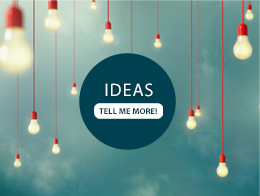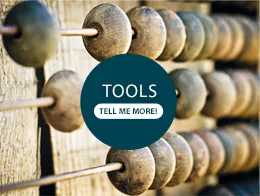Nepal is a country many Western alpinists and spiritual pilgrims hold in awe. Yet it is also a country with serious socioeconomic challenges, pollution and widespread poverty among them. Nepal also struggles with an infant mortality rate higher than most countries. According to UNICEF data, more than 50,000 newborn babies die each year in Nepal. The International Database of the United States Census Bureau reports that of every 1,000 infants born, nearly 50 pass away. That same database shows countries like the U.S., Canada, and the United Kingdom have rates at six deaths — or fewer — per 1,000 births.
What’s causing all those infant deaths in Nepal? A large portion are attributed to respiratory issues that arise in infants born prematurely, and those born with illness or infection.
The common treatment — both in developing and developed nations — is called a Continuous Positive Airway Pressure (CPAP) machine, which is essentially a breathing mask that goes over the mouth and nose of a patient. The CPAP machine is used in everything from emergency medicine to treatment for sleep apnea. But it isn’t always the most effective treatment for newborns suffering from infant respiratory distress syndrome, in which case a Bubble CPAP is used — basically a straw in a container of water. And when the Bubble CPAP doesn’t suffice, approaches differ widely for treatment of infants in the developed world versus infants in the developing world.
“Bubble CPAPs are used all around the world from here at the University of Michigan to rural Nepal,” says Stephen John, a medical student at the University of Michigan. “At the University of Michigan, they will take you off the Bubble CPAP and move you onto a $40,000 ventilator and you’ll be fine. In most of the world, Bubble CPAP is all that exists — if even Bubble CPAP exists. Some places don’t have anything. But, let’s say you’re in the part of the world where Bubble CPAPs do exist. You’re born, you’re a premature infant, and your sick and they’ll connect you to Bubble CPAP and see it’s not enough. The only alternative is for mom and dad to basically have a little bag connected to a mask and squeeze the bag by hand.”
John, who grew up in Nepal and is the son of a pediatrician, has seen it play out too many times. One parent pumps the bag for an hour or two until they become tired. Then the other takes over. And back-and-forth, literally breathing life into their infant, until it’s just too much and they can’t continue for days and weeks.
“It’s a terrible situation,” John says. “Most of the world doesn’t have a means to ventilate these infants and so they go home and die.”

Aaron Steiner (left) and Stephen Paul with the NeoVent. Photo courtesy of the University of Michigan
THE CPAP ADD-ON DEVICE
So John, who is just 22 years old and will earn his medical degree in two years, set out to do something about it. And what he did was start a medical device company called AIM Tech, which features an award-winning health device, called NeoVent, which is designed to solve this exact issue. The NeoVent is essentially an add-on to a traditional CPAP.
“Imagine the lungs of an infant as a bunch of tiny balloons,” says John, who was born in the U.S. but spent ages five to 16 in Nepal while his parents were on medical mission. “You can imagine how it’s harder to inflate a balloon for the first time. If you are born as a premature infant or with an illness, you may not have the strength to inflate the lungs yourself.”
A traditional CPAP solves that problem by providing “high” pressure to the lungs, John explains.
“The problem is, that is only sufficient for seven out of 10 kids with respiratory distress,” John continues. “The other three actually need you to provide breath for them.”
Those infants need a dual high and low pressure model. “Like what that big fancy pressure ventilator does,” John says, referencing a hospital ventilator that can cost upwards of $40,000. NeoVent is essentially a series of valves and a basket that connects to a bubble CPAP. Treatment providers can set the levels to which the basket will rise and fall according to the infant’s specific breathing. For about $25, John says the device sends air in the lungs and lets it come back out, or physically delivers breaths to the infant. Or, as their website puts it, “The device collects bubbles, rises due to buoyancy, vents the bubbles and sinks due to gravity. As this cyclically repeats, two levels of pressure are delivered.”
FROM CHOBANI YOGURT CUPS TO 3-D PRINTING
NeoVent is the product of nearly a lifetime of exploring pediatric respiratory issues. When John was young, his father, who worked in the local Nepalese hospital, often spoke about the issue. “The need for pediatric respiratory distress was something he experienced quite a bit and was dinner table conversation,” John recalls. As John grew, those dinner table conversations turned into real-life experiences when he began volunteering at the hospital around age 14. “I got to see the need myself as well. And the project definitely came out of that experience,” John says now, noting he spent a lot of time working with infants on CPAPs.
When John left Nepal to attend Western Michigan University at around age 16, he decided to major in mechanical engineering with the plan to innovate health care devices. Conversations between his father and Eric Cheng, a co-founder of Respiratory Therapists Without Borders, led John to explore a one-connection add-on to the Bubble CPAP, that would be physician-controlled and non-invasive.
John recruited Joseph Barnett, a Western Michigan University biology student, and the two began making prototypes with milk cartons, ping-pong balls, and Chobani yogurt cups in John’s basement. They experimented with rotors like you’d find on car brakes. They tried a model with “flappers” that worked like the reed of a musical instrument. But only one had promise. “So we stuck with that one,” John adds.
With a model in place, the duo moved into the lab of Peter Gustafson, a professor in the college of engineering and medical school at Western Michigan. “We started to move away from yogurt cups and milk cartons and what not and we started actually 3-D printing our devices, which obviously was a lot more reliable and consistent,” John explains.
A COLLEGIATE COMPETITION WINNING STREAK
After a year of working out the kinks and once they had a device that “showed a fair amount of progress” to solving the problem, John says, they started entering design competitions. From spring through fall 2015, the two racked up design competition wins including the James Dyson Award, a competitive $3,500 international award for undergraduate design and innovation. “Up until that point, we were working on a pretty sparse budget,” John says.
With some dough in their pockets, the two began pre-clinical testing in 2016. They took the device back to Nepal and presented in to the Nepali government, where they earned approval to do in-country trials. Late last month (February), the NeoVent won more than $130,000 combined in business competitions at the University of Michigan and University of Louisville.
In the next “month or two,” John says they plan on beginning their first human-safety study, which John says will obviously up the stakes a lot. “If the device fails, you could potentially cost the infant’s life,” John points out. “So there is a very high bar to where the technology, appropriately, should be held.”
BRINGING THE PRODUCT TO MARKET AND TO THE DEVELOPING WORLD STILL A CHALLENGE
A few months ago, John recruited Aaron Steiner, a current MBA student at the University of Michigan’s Ross School of Business to help with business development and scaling. Steiner, who comes from healthcare consulting and no entrepreneurial experience, says he entered the business school hoping to either do his own thing or find someone else working in healthcare devices and products. Once Steiner met John through mutual friends, the NeoVent was a “pretty easy sell,” Steiner, 29, says.
Once the device makes it through human-safety clinical trials and gains U.S. Food and Drug Administration approval, the team can take NeoVent to market, which Steiner predicts is still at least a year away. Another hurdle the team will have to clear is getting the product into different countries. Nepal was relatively easy because of John’s connections. But the team also has plans to take the product to other countries with high infant mortality rates, many of which are in Sub-Saharan Africa, Latin America, and other Asian countries. And once the team even gains approval of taking the product into countries, barriers like training medical professionals on how to use the product still stand in the way.
“That’s critical,” Steiner says of the training portion of the device implementation. “Especially for a new device when they don’t have anything else comparable to it now.”
Still, the team has hope their successes will continue despite the challenges.
“We can see the vision of it being in lots of different places and helping to save lots of lives or improve lots of lives, but we’re increasingly appreciating how difficult it is to get them out to those places,” Steiner says.
Overcoming that difficulty, John says, will come down to doing exactly what sent John down this path — saving newborn lives.
“If you are able to rigorously show your technology provides a substantial health benefit — you’re actively saving lives and benefitting people — and it’s cost-effective, simple to use, and does not require a ton of resources, if you can demonstrate that, then there is great potential for scale.”



